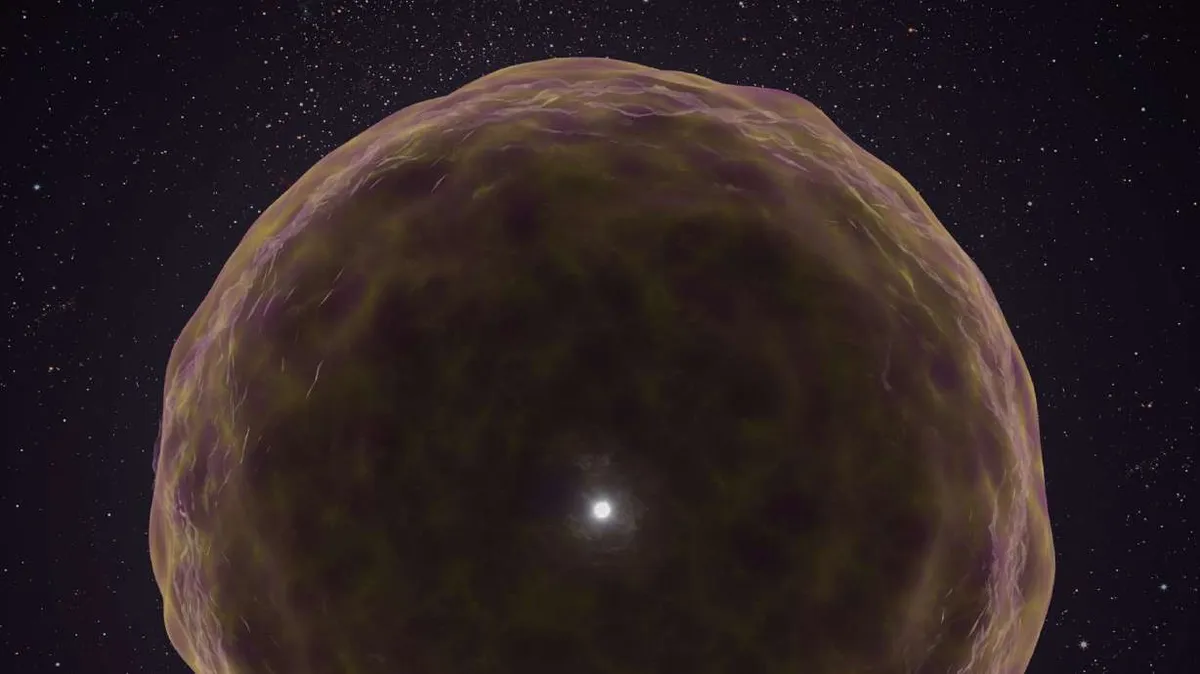
In a groundbreaking study published in the journal Nature, astronomers have identified a new type of supernova that offers an unprecedented view into the mechanisms at play in a star just before it detonates. This significant discovery sheds light on the complex processes that govern the life cycles of massive stars, revealing insights that challenge existing theories in stellar evolution.
Massive stars, often likened to celestial onions, possess multiple layers composed of various elements. The outermost layers primarily consist of lightweight elements such as hydrogen and helium, while heavier elements form deeper within. According to Adam Miller, an assistant professor of physics and astronomy at Northwestern University, these stars are typically 10 to 100 times the mass of our sun and sustain themselves through the process of nuclear fusion.
Initially, a massive star's composition is about 75% hydrogen and 25% helium, with traces of carbon, nitrogen, and silicon. As fusion occurs in the star's core, hydrogen is converted into helium, forming the outer layers. Over time, this fusion process creates additional layers of heavier elements like silicon, sulfur, and oxygen, which build up beneath the outer hydrogen and helium layers.
As a massive star exhausts its nuclear fuel, it eventually forms an iron core. While fusion generates energy that counters gravitational collapse, the fusion of iron into heavier elements cannot sustain the necessary pressure. Consequently, the core collapses under gravity, leading to a cataclysmic explosion. However, the recent observations of supernova SN2021yfj defy conventional expectations.
Before its explosion, the star that became supernova SN2021yfj had lost its outer layers of hydrogen, helium, and carbon. Just prior to the detonation, it displayed a previously hidden layer of heavier elements, including silicon, sulfur, and argon. This discovery marks the first time astronomers have observed a star stripped to its core before a supernova event. Lead author Steve Schulze, a research associate at Northwestern's Center for Interdisciplinary Exploration and Research in Astrophysics, emphasized the significance of this finding, stating that it reveals how stars can lose substantial material before their explosive demise.
The implications of this observation are profound. It provides direct evidence of the internal structures of massive stars, challenging the traditional understanding of stellar evolution. Miller remarked that the event was so unusual that the team initially doubted their observations, suggesting that current theories may not fully account for the complexities of stellar life cycles.
While the exact nature of the star that resulted in SN2021yfj remains uncertain, researchers estimate it was approximately 60 times the mass of the sun. However, due to the loss of its outer hydrogen layer, its effective mass at the time of explosion was likely lesser than at birth. The study highlights that massive stars can shed significant amounts of material before their explosive end, with this star losing more than previously documented.
Schulze noted that the extreme instabilities within massive stars can lead to rapid contractions followed by violent energy releases, causing the shedding of their outer layers. In this case, the star expelled a dense shell of silicon and sulfur right before its death, illuminating these elements in the aftermath of the explosion.
The discovery of supernova SN2021yfj occurred in September 2021 while utilizing the Zwicky Transient Facility at the Palomar Observatory in California. This facility is known for its capability to detect transient astronomical events like supernovas. The team initially identified a rapidly brightening object located 2.2 billion light-years from Earth.
To ascertain the nature of the object, the researchers sought to capture its spectrum. Although Zwicky is adept at measuring brightness changes, it cannot capture spectra. Fortunately, Yi Yang, an assistant professor at Tsinghua University, managed to observe the object using the W. M. Keck Observatory in Hawaii, revealing the elemental composition that included silicon, sulfur, and argon.
The team is still investigating the causes behind the star's unique behavior, considering possibilities like interactions with a companion star or exceptional stellar winds. Nonetheless, they suspect that the star may have self-destructed in a violent manner. This leads to the classification of this discovery as a type Ien supernova, a novel category that highlights the presence of elements typically found in the deepest layers of massive stars.
Overall, this groundbreaking discovery offers crucial insights into the final stages of massive stars, opening new avenues of research into the intricate processes that govern their explosive endings. The findings not only challenge existing models of stellar evolution but also pave the way for a deeper understanding of the universe's most massive celestial bodies.